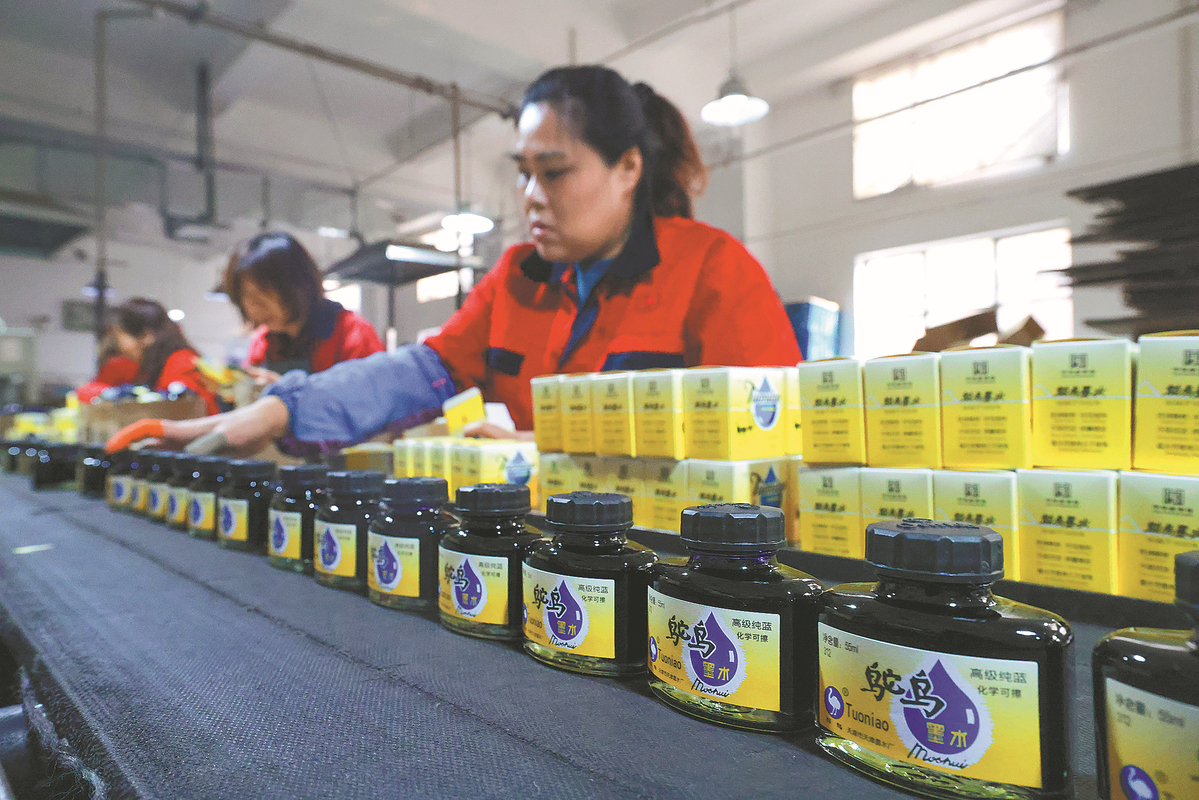Ostrich Ink says global expansion to propel sales growth
By YANG CHENG in Tianjin | CHINA DAILY | Updated: 2024-07-20 07:21

Tianjin-based ink brand Ostrich Ink has forecast sales growth through international expansion amid a consumer shift away from traditional pen and ink to digital.
"The company's overseas sales now make up for 15-20 percent of total sales," the company's general manager Huang Qiang said, expressing optimism about the brand's revival.
"We credit Ostrich's success to overseas markets and innovative cultural products, including collaborations with iconic Chinese landmarks like the Forbidden City and Tianjin Museum," Huang said.
Targeting Gen Z and the middle-income group, Ostrich offers artistic painting models and designs, partnering with State-owned enterprises for high-end clients.
Its cultural products, inspired by ancient Chinese symbols, including the blue dragon, white tiger, vermilion bird and black tortoise, are priced at an average of $48 per bottle in international markets.
Established in 1935, Ostrich overcame challenges brought on by foreign companies to become a top ink brand in the country, symbolizing resilience like an ostrich thriving in adversity.
Guo Yaoting, the company founder, wanted the brand to emulate the resilience of an ostrich, capable of thriving in challenging conditions, and estimated that the product would successfully navigate challenges posed by overseas competitors.
The company transitioned to State ownership in 1956 and was privatized in 1998.
While the time-honored brand dominated the North China market, its rival, Hero, took the lead in South China.
In recent years, it has registered its trademarks in 14 countries; and it began to secure ink orders from United Nations Development Programme in 2022.
Eyeing Indonesia, Ostrich plans to participate in the ASEAN Stationery & Gifts Expo this winter.
Partnering with foreign brands and supermarkets like Lidl, the company aims to boost online sales, and will launch an account on short-video platform Douyin soon.
Huang stressed continuous innovation in art and cultural products, emphasizing the importance of a digital presence and engaging with a wider audience.
Despite the success, Huang is not content with the current state of the business.
While the digital documentation market is waning, the traditional ink business still accounts for 5-10 percent of overall sales, he said.
"Constantly exploring the trails in creative art design and cultural innovation products is top of my agenda," he said.
Liu Ying, director of the Department of Marketing, Management School, the Tianjin University of Commerce, said Ostrich's expansion into the overseas market showcases its unwavering dedication and the high quality of its products, while its valuable artistic innovations cater to the growing global market demand.
"The cultural innovation products embody the poetic and picturesque beauty of Chinese traditional art, inspiring artistic emotions in consumers," Liu said.
"We anticipate that more Chinese products will enhance their visibility amid a resurgence in traditional Chinese art, integrating artificial intelligence and digital techniques to showcase the allure of Chinese art," she added.
yangcheng@chinadaily.com.cn
























